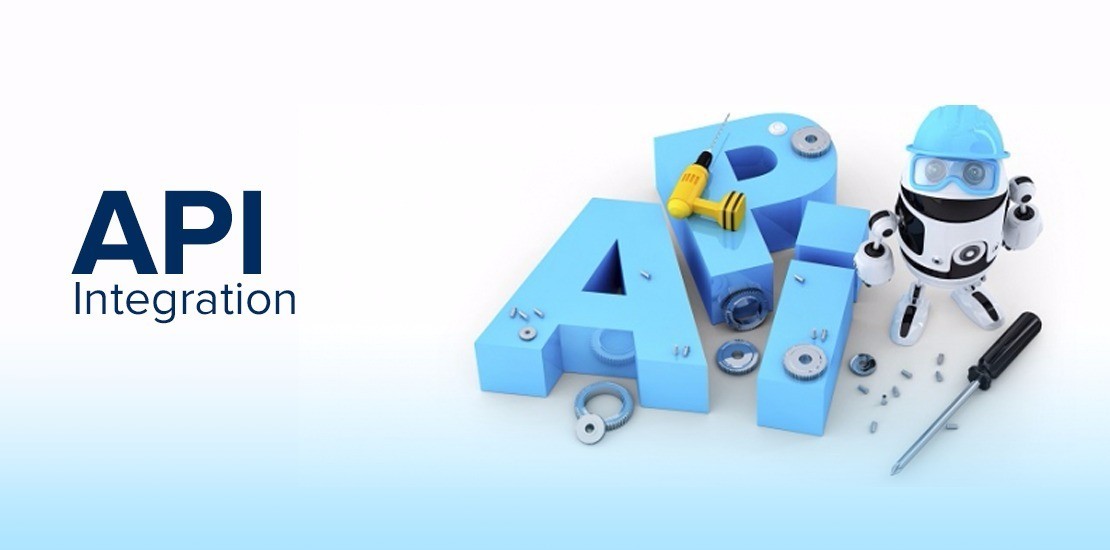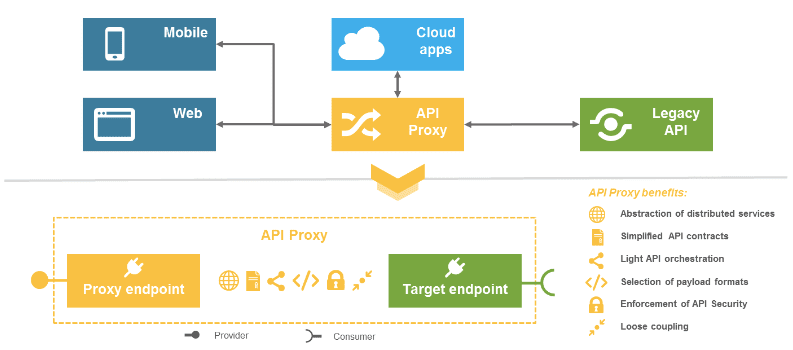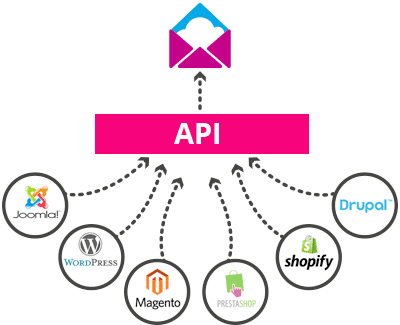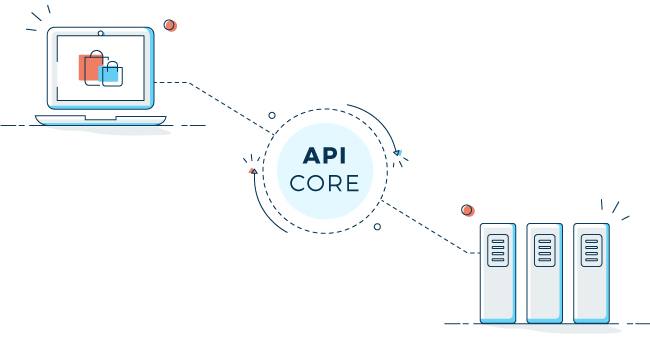
API integration refers to the process of connecting different software applications and systems, allowing them to communicate and share data with each other. API stands for Application Programming Interface, and it defines the methods and protocols that applications can use to communicate with each other. APIs allow different software systems to interact seamlessly, enabling them to work together and share information.
Here are some key points that highlight the importance of API integration:
- Interoperability: APIs enable interoperability between different software systems, regardless of their underlying technologies or platforms. This is crucial in today’s complex IT landscape where various applications need to work together to provide a unified user experience.
- Efficiency: API integration streamlines processes and reduces manual effort by automating the exchange of data between systems. This leads to increased efficiency, as tasks can be performed automatically without the need for manual intervention.
- Data Sharing: APIs facilitate the seamless exchange of data between applications. This is essential for businesses that use multiple software solutions, as it ensures that information is consistent and up-to-date across the entire ecosystem.
- Innovation: APIs play a significant role in fostering innovation by allowing developers to build on top of existing platforms. Companies often release APIs to encourage third-party developers to create new applications or features that complement their services.
- Scalability: As businesses grow, the need for scalable solutions becomes paramount. APIs enable scalability by providing a modular approach to software development. New functionalities can be added through API integration without disrupting existing systems.
- Faster Development: API integration accelerates the development process by allowing developers to leverage existing functionalities. Instead of building everything from scratch, developers can focus on creating specific features while integrating with APIs for other functionalities.
- Enhanced User Experience: API integration contributes to a seamless and enhanced user experience. For example, a website may integrate with payment processing APIs to offer a smooth checkout experience, or a mobile app might integrate with a mapping API to provide location-based services.
- Adaptability: APIs provide a level of adaptability, allowing businesses to easily add or replace components in their technology stack without disrupting the entire system. This adaptability is crucial in dynamic business environments.

In summary, API integration is vital for modern software development and business operations. It enables systems to work together, facilitates data exchange, promotes innovation, and contributes to overall efficiency and scalability. APIs have become foundational in building connected and interoperable digital ecosystems.
What is API Integration?
API Integration ( Application Programming Interface ) can be defined as a flow of processes without any hindrance. API creates interaction between data, applications, and devices. Basically, an API connects devices and programs by creating a seamless flow of data & information between them.
API can be closely related to the application. In layman’s language, what API does is it create an interface between an external APP & backend of your website. With API Integration you can easily handle the App from the backend of your website.
A very Good Example of API Integration is apps like Swiggy. They have integrated Google Maps API into there Application. So a user can see the location of the Restaurant on the App itself. And this process can be achieved with very little coding effort.
We are going to discuss in detail how API Integration Works, What API types are there, Most useful API and much more in our later posts.
But before we dig deep into API Integration !!!
What is an API ??

Well, the official definition as per Wikipedia is :
“A set of subroutine definitions, protocols, and tools for building application software. In general terms, it is a set of clearly defined methods of communication between various software components.”
But what does this really mean?
API act like an Interface that allows your app or website to interact with an external service in a very simple way. It is estimated that more than one million APIs are in use at present.
API integration stands as the most important integration of your app to an external service to use their tools & services. Most of Service agencies have their APIs so that any website could integrate with their services easily.
The most common example of an API as payment gateways, social media logins to your app, etc. When you add a payment gateway to your website you are basically using the API of an external agency to receive payment on your website.
Some huge services that provide their APIs to Integrate with your websites are Google Map, Whatsapp, Facebook API & many more.
Why API Integrations Are Important?
It’s very important to have each application properly connected to your backend so you can push updated data easily to your application. But is that it with API Integration?
Well no, In this case, API integration ensures that there is data integrity across the stack so there is no issue at all related to versioning.
So basically to ensure the flawless flow of data for your end-user it is very important to know what is API integration?.
Interoperability In API Integration
Interoperability refers to the ability of different systems, applications, or components to exchange and use information seamlessly. In the context of technology and software, interoperability ensures that diverse systems can work together, share data, and operate cohesively. Here are key aspects of interoperability:
- Compatibility:
Interoperability requires a level of compatibility between systems. This involves adherence to common standards and protocols that enable different systems to understand and interpret data in a consistent manner. - Data Exchange:
Interoperability allows for the exchange of data between systems, even if they are developed by different vendors or run on different platforms. This is essential for creating integrated and interconnected digital environments. - Communication:
Systems with interoperability can communicate effectively with each other. This communication can involve various methods, such as API calls, messages, or data streams, depending on the design and requirements of the systems involved. - Seamless Integration:
Interoperability enables the seamless integration of different technologies and software components. This is particularly important in complex IT environments where various applications need to work together to provide a unified solution. - Standards and Protocols:
Commonly agreed-upon standards and protocols play a crucial role in achieving interoperability. These standards define how data is formatted, transmitted, and interpreted, ensuring a shared understanding among systems. - Cross-Platform Compatibility:
Interoperability extends across different platforms and operating systems. Applications that can run on multiple platforms and still interact with each other contribute to a more flexible and adaptable technology ecosystem. - Plug-and-Play Functionality:
In an interoperable system, new components can be added or replaced with minimal effort. This plug-and-play functionality allows for scalability and adaptability as technology evolves or business needs change. - Ecosystem Integration:
Interoperability is crucial in creating integrated technology ecosystems where different applications and services collaborate to deliver a comprehensive solution. This is common in areas such as healthcare, finance, and the Internet of Things (IoT). - User Experience:
Interoperability enhances the user experience by providing a seamless and integrated environment. For example, a user may interact with a mobile app that seamlessly connects to a backend server, a database, and other external services. - Open Innovation:
Interoperability fosters open innovation by allowing developers to build on top of existing technologies. Open APIs and standards enable third-party developers to create new applications or features that complement existing systems.

Interoperability is a critical consideration in the design and implementation of software and technology solutions, particularly as businesses increasingly rely on diverse and interconnected systems to meet their operational needs. Standards organizations, industry groups, and software developers actively work to establish and promote interoperability standards to ensure the smooth functioning of integrated systems.
Efficiency: API integration
Efficiency in the context of API integration refers to the streamlined and effective exchange of data and functionalities between different software systems. Here are some ways in which API integration contributes to efficiency:
- Automation of Processes:
API integration allows for the automation of various processes by enabling systems to communicate and share data seamlessly. Instead of manual data entry or transfer, APIs facilitate the automatic exchange of information between applications. - Real-Time Data Syncing:
API integration enables real-time data syncing between systems. This means that updates or changes in one system are immediately reflected in connected systems, ensuring that all involved parties have access to the most up-to-date information. - Elimination of Manual Tasks:
By automating data exchange and communication between systems, API integration reduces the need for manual intervention. This not only saves time but also minimizes the risk of errors associated with manual data entry. - Enhanced Productivity:
With API integration, systems can work together seamlessly, allowing users to access information and perform tasks without switching between different applications. This enhances productivity by providing a unified and efficient working environment. - Faster Development Cycles:
APIs enable developers to leverage existing functionalities and integrate them into new applications. This accelerates the development process, as developers can focus on building specific features rather than reinventing the wheel for every component. - Scalability:
API integration supports scalability by providing a modular approach to software development. As business needs grow or change, new functionalities can be added through API connections without disrupting existing systems. - Flexibility and Adaptability:
APIs offer flexibility by allowing systems to adapt to changing requirements. New functionalities or services can be added or replaced through API integration, providing a level of adaptability that is crucial in dynamic business environments. - Cross-Platform Compatibility:
APIs facilitate interoperability across different platforms and technologies. Applications can communicate regardless of their underlying infrastructure, allowing for the integration of diverse software solutions. - Innovation:
API integration fosters innovation by enabling the combination of different services and functionalities. Developers can create new and innovative solutions by integrating APIs that provide specialized features or data. - Improved User Experience:
API integration contributes to a seamless user experience. For example, an e-commerce website can integrate with payment processing APIs, providing a smooth and secure checkout process for users.
Efficient API integration is crucial for businesses looking to create a connected and cohesive digital ecosystem. It not only improves operational efficiency but also enhances the overall user experience and supports innovation in software development.
Data Sharing: APIs
APIs (Application Programming Interfaces) play a crucial role in facilitating data sharing between different software applications and systems. Here’s how data sharing through APIs works and why it is important:
How APIs Enable Data Sharing:
- Standardized Communication:
APIs provide a standardized way for different software components to communicate. They define a set of rules and protocols that govern how requests for data should be made and how the data will be formatted and returned. - Request-Response Model:
APIs typically operate on a request-response model. One system (the client) sends a request for specific data or functionality to another system (the server) via the API. The server processes the request and returns the requested data in a predefined format. - Data Formats:
APIs often use standard data formats for communication, such as JSON (JavaScript Object Notation) or XML (eXtensible Markup Language). This ensures that data can be easily understood and processed by both the sender and the receiver. - Authentication and Authorization:
APIs often include mechanisms for authentication and authorization to ensure that only authorized users or systems can access specific data. This helps in maintaining data security and privacy. - Endpoints:
APIs expose specific endpoints that represent different functionalities or data sets. Each endpoint corresponds to a specific resource or action, making it clear how to interact with the API. - Documentation:
API providers usually offer documentation that outlines how to use the API, including the available endpoints, request methods, data formats, and any required authentication parameters. This documentation is crucial for developers who want to integrate with the API.
Why Data Sharing through APIs is Important:
- Interoperability:
APIs enable interoperability by allowing different systems, regardless of their underlying technologies, to communicate and share data. This is crucial in today’s diverse IT landscape. - Efficiency:
Data sharing through APIs automates the exchange of information, reducing the need for manual data entry or file transfers. This leads to increased efficiency in data-related processes. - Real-Time Data Access:
APIs facilitate real-time data access and updates. Systems can sync data seamlessly, ensuring that all connected applications have access to the most current information. - Ecosystem Integration:
APIs are essential for building interconnected ecosystems where various applications and services work together to provide a comprehensive solution. For example, a mobile app might use APIs for authentication, payment processing, and mapping services. - Innovation:
APIs foster innovation by allowing developers to build on top of existing platforms. Companies often release APIs to encourage third-party developers to create new applications or features that complement their services. - Scalability:
As businesses grow, the need for scalable solutions becomes paramount. APIs support scalability by providing a modular approach to software development. New functionalities can be added through API integration without disrupting existing systems.
In summary, APIs are the backbone of modern data sharing, providing a standardized and efficient way for different systems to communicate and exchange information. They are fundamental to creating integrated and interconnected digital ecosystems.
Innovation: APIs
APIs (Application Programming Interfaces) play a significant role in fostering innovation across various industries. Here are several ways in which APIs contribute to innovation:
- Open Access to Services:
APIs provide open access to services and functionalities offered by a platform or application. This openness encourages third-party developers to leverage existing services and build new, innovative applications on top of them. - Ecosystem Expansion:
APIs allow businesses to create ecosystems where multiple services and applications work together. This fosters collaboration and encourages the development of new, integrated solutions that can provide more value to end-users. - Rapid Development:
APIs enable rapid development by providing pre-built functionalities that developers can integrate into their applications. This accelerates the development process, allowing teams to focus on creating unique features rather than reinventing the wheel. - Specialized Functionality:
APIs often expose specialized functionalities or data sets that can be utilized by developers to enhance their applications. This allows for the creation of more feature-rich and specialized solutions without having to build everything from scratch. - Innovative Use Cases:
Third-party developers can discover and implement innovative use cases for APIs that the original creators might not have envisioned. This diversity of perspectives often leads to novel applications and creative solutions. - Collaboration:
APIs facilitate collaboration between different organizations and developers. Businesses can share access to their APIs, enabling external developers to contribute to and enhance the functionality of their platforms. - Cross-Platform Integration:
APIs enable cross-platform integration, allowing applications to work seamlessly across different devices and services. This flexibility encourages the development of innovative solutions that cater to a broader range of users. - Responsive to Market Needs:
APIs provide a mechanism for companies to adapt quickly to changing market needs. By exposing their services through APIs, businesses can respond to emerging trends and technologies more efficiently. - Data Access and Analysis:
APIs provide access to data, enabling developers to create innovative data analysis and visualization tools. This is particularly important in industries such as finance, healthcare, and research where data-driven insights are crucial. - Monetization Opportunities:
API providers can monetize their services by allowing third-party developers to access and use their APIs. This creates a revenue stream for the API provider while incentivizing external developers to create innovative applications. - Agility in Technology Adoption:
APIs make it easier for organizations to adopt new technologies. For example, integrating with APIs allows businesses to incorporate emerging technologies like machine learning, artificial intelligence, or blockchain into their existing systems without a complete overhaul.
In conclusion, APIs are catalysts for innovation by providing a foundation for collaboration, creativity, and the rapid development of new solutions. They empower developers to think beyond the confines of individual applications and contribute to the creation of a more interconnected and innovative digital landscape.